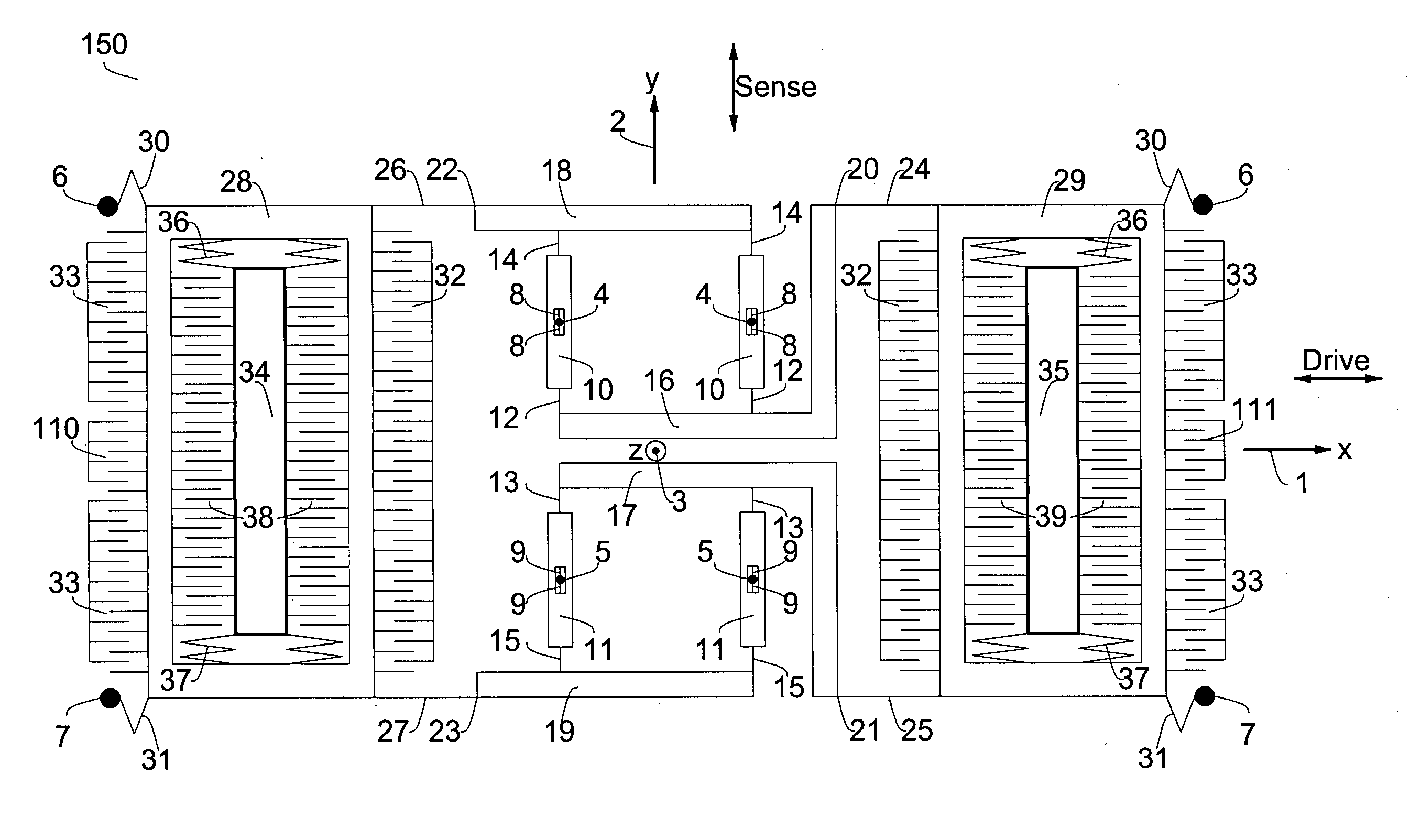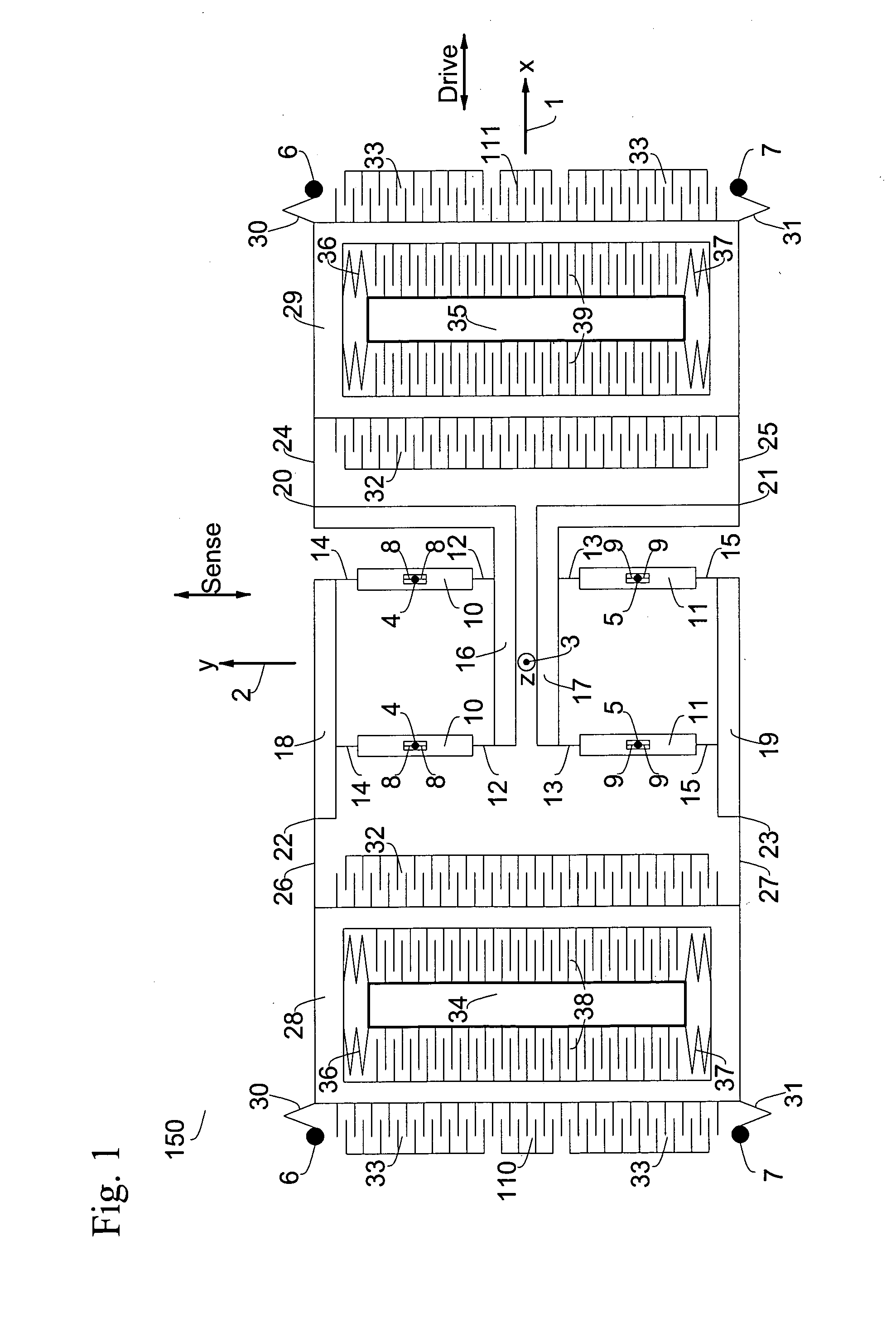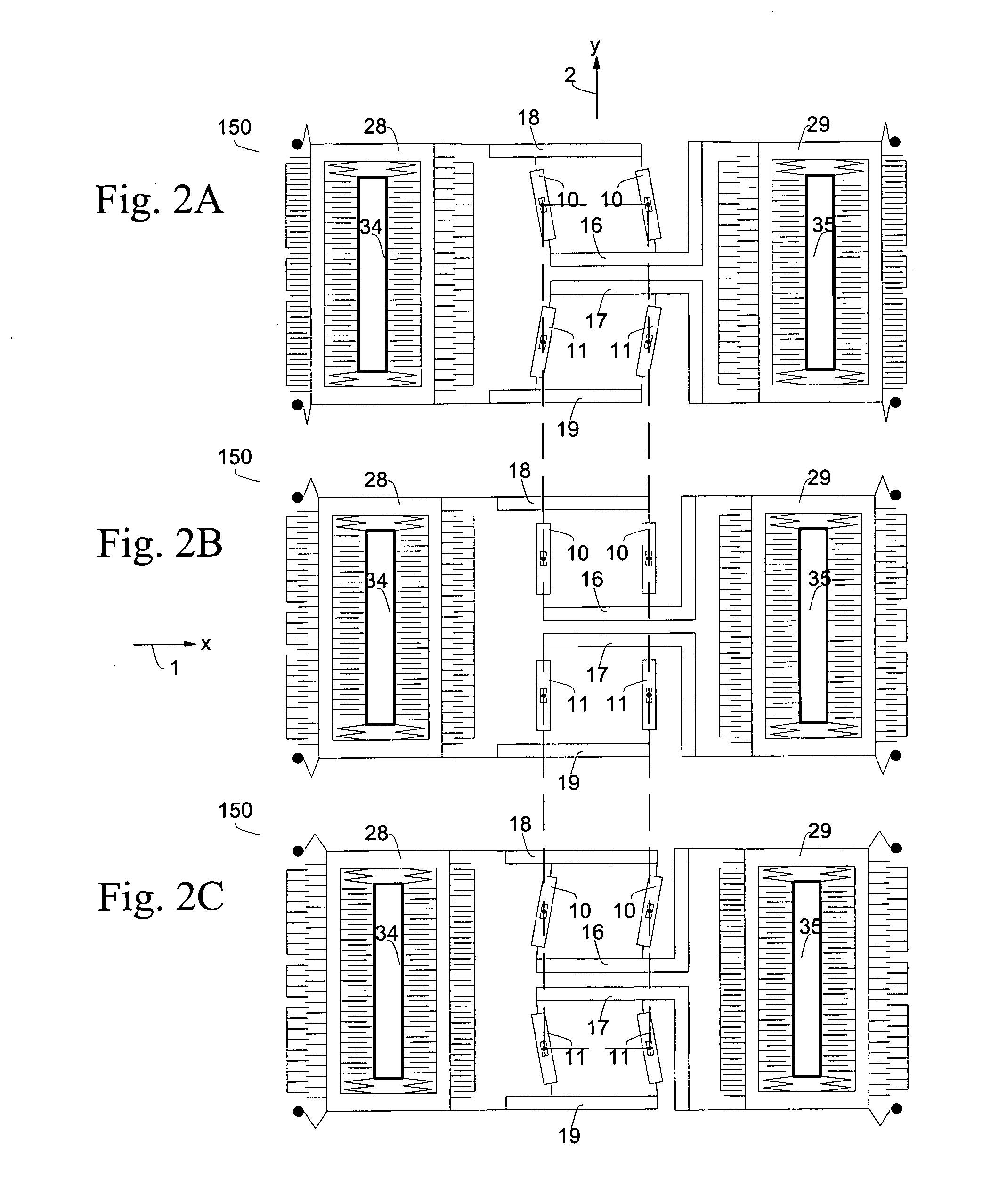Z-axis angular rate sensor
a technology of angular rate sensor and z-axis, which is applied in the direction of acceleration measurement using interia force, turn-sensitive devices, instruments, etc., can solve the problems of increasing system complexity or fabrication processing, unable to scale up to high-volume, and low-cost manufacturing
- Summary
- Abstract
- Description
- Claims
- Application Information
AI Technical Summary
Benefits of technology
Problems solved by technology
Method used
Image
Examples
Embodiment Construction
The rate sensor of the present invention satisfies critical gyrodynamic aspects by virtue of the sensor's mechanical linkages which give rise to fundamental anti-phase motion of its two oscillating masses. This is in contrast to the dynamics of prior art coupled oscillators, which have “symmetric” and “antisymmetric” resonant modes with the undesired symmetric mode being fundamental.
In the present invention, anti-phase operation is accomplished by unique structural linkage configurations resulting in negligible phase error. The linkage dictates mechanical dynamics, which can have anti-phase motion as the fundamental mode, with insensitivity to small mass or spring imbalances. The structural symmetries produce linear motions in a robust fashion. Other oscillation modes can be of higher order with comfortable mode separation. The mechanical design is preferably realized using any of a variety of MEMS fabrication technologies, including, but not limited to, Deep Reactive Ion Etching...
PUM
 Login to View More
Login to View More Abstract
Description
Claims
Application Information
 Login to View More
Login to View More - R&D
- Intellectual Property
- Life Sciences
- Materials
- Tech Scout
- Unparalleled Data Quality
- Higher Quality Content
- 60% Fewer Hallucinations
Browse by: Latest US Patents, China's latest patents, Technical Efficacy Thesaurus, Application Domain, Technology Topic, Popular Technical Reports.
© 2025 PatSnap. All rights reserved.Legal|Privacy policy|Modern Slavery Act Transparency Statement|Sitemap|About US| Contact US: help@patsnap.com



